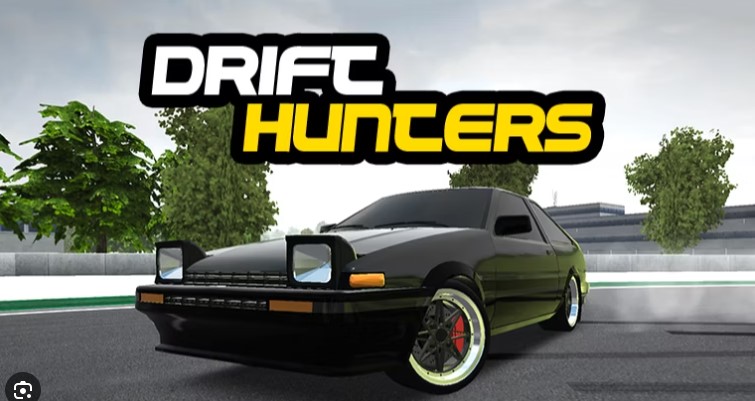- July 10, 2025
- By: llulosede
- Web Development
While racing games have always been a major part of the gaming world, few have carved out their own identity as uniquely and effectively as Drift Hunters. At a glance, it’s a modest browser-based drifting game with a clean design and simple mechanics. But once behind the wheel, players quickly realize that Drift Hunters is anything but basic.
What makes Drift Hunters stand out isn’t just that it’s free, or that it can run in any web browser — it’s that it captures the soul of drifting. It’s not about racing to the finish line. It’s about learning how to control a car at the edge of traction, mastering balance, and finding style in chaos.
This game has become a silent teacher, an unofficial drifting simulator that educates, inspires, and entertains. For many, it’s the first step into the world of motorsports.
From Indie Project to Global Phenomenon
Originally developed in Unity, Drift Hunters didn’t launch with a massive ad campaign or corporate funding. It was built with love by a small team of developers who understood one thing better than most: the appeal of real drifting.
Over the years, it spread through word of mouth. Gamers stumbled across it in school computer labs, through YouTube videos, or while browsing for free racing games. Its smooth gameplay, low system requirements, and highly satisfying mechanics made it instantly appealing.
Today, Drift Hunters has evolved into a global brand, spawning spin-offs like Drift Hunters MAX and inspiring a passionate online fanbase of tuners, content creators, and competitive players.
The Gameplay: Controlled Chaos at Its Best
Drifting is, by nature, difficult. It’s the art of sliding through corners while maintaining control. Done poorly, it looks like a spin-out. Done well, it looks like dance.
Drift Hunters distills that experience into a format anyone can enjoy. The game’s physics engine is surprisingly realistic. Players must master key driving concepts:
-
Throttle control – Too much gas and you’ll over-rotate. Too little and you’ll lose momentum.
-
Counter-steering – Steering in the opposite direction of the slide to keep the car balanced.
-
Weight transfer – Letting off the gas or braking at the right time to shift momentum.
-
Feathering and clutch-kicks – Techniques to maintain or initiate drifts, depending on the car.
There’s a real satisfaction that comes from learning how each car responds to your input. Every drift teaches you something, whether you realize it or not.
Car Culture in Its Purest Form
One of Drift Hunters’ most celebrated aspects is its love for car culture. This isn’t just a game where you drive — it’s a game where you build, tune, and grow attached to your machines.
Featured Vehicles Include:
-
JDM legends like the Nissan S13, Toyota AE86, and Mazda RX-7.
-
European classics like the BMW E36, M3, and Audi TT RS.
-
Supercar dream machines like the Nissan GT-R R35 and Porsche 911 GT.
Each car has a distinct driving feel. Lightweight cars drift easily but can spin out. Heavy high-horsepower vehicles require more finesse. You feel every difference — and it’s addictive.
Tuning, Customization, and Real Engineering Principles
Where most browser games simplify their mechanics, Drift Hunters takes a different approach. It introduces real engineering concepts and lets players tweak their car’s performance:
-
Suspension stiffness (front and rear)
-
Brake bias (front/rear balance)
-
Turbo pressure
-
Gear ratios
-
Camber angles
This tuning system is not just cosmetic. It directly affects how the car handles. Increase rear stiffness and your car oversteers more. Set brake bias too far forward, and you’ll lose the rear end under braking. It’s subtle — and brilliantly educational.
For players new to car mechanics, this becomes a sandbox of learning. Tuning becomes a process of trial, error, and discovery. Many players leave Drift Hunters with a better understanding of real car dynamics than they had going in.
Visual Customization That Reflects Car Culture
Beyond performance, Drift Hunters lets you personalize your cars visually. Paint jobs, wheel styles, gloss or matte finishes — everything is adjustable. Want a clean street build? Go for classic silver paint and OEM wheels. Want a show car? Try neon colors, chrome lips, and wide-body vibes.
The visual editor is easy to use but powerful, helping players build cars that feel uniquely “theirs.” The result is an extension of the drifting world’s style culture — where individuality is key.
Tracks Designed for Drifting, Not Racing
Instead of large circuits or open-world sandboxes, Drift Hunters features tightly designed environments that emphasize drift technique.
Key Tracks:
-
Emashi Circuit – Great for practicing mid-speed transitions.
-
Docks – A wide-open beginner area with space to test techniques.
-
Touge Roads – Tight mountain roads that demand control and confidence.
-
City Street Map – Forces the player to manage speed and angles carefully.
Each track encourages players to experiment with different speeds, lines, and styles. Some focus on wide arcs, others on hairpin corners. The variety keeps the game fresh while helping players improve.
Why the Game Is Addictive — In a Good Way
Most players will tell you: once you start drifting, it’s hard to stop. This isn’t just due to the game’s mechanics — it’s because Drift Hunters nails several psychological triggers:
1. Immediate Feedback
Every drift, good or bad, gives you immediate information. You know when it feels right. You see the points go up. You feel the momentum.
2. Visible Progress
You start with a basic car. Every drift earns you money. Every purchase brings you closer to your dream build. It’s a slow, satisfying climb.
3. Flow State
Long drift chains, especially on technical tracks, create a rhythm. You focus completely. Distractions fade. This is the flow state — and Drift Hunters nails it.
Drift Hunters MAX – The Evolution
As a follow-up, Drift Hunters MAX improved nearly every aspect of the original:
-
Better graphics and lighting
-
Improved vehicle detail
-
Refined physics and more realistic feedback
-
New cars and maps
-
Improved mobile and desktop optimization
Despite these upgrades, it remains free and playable in browsers — a decision that continues to attract millions of players.
A Community That Keeps Growing
Though it lacks native multiplayer, Drift Hunters has developed a massive fanbase. YouTube is packed with videos showcasing:
-
Custom car builds
-
Record-breaking drift combos
-
Tuning tips and guides
-
Cinematic drifting montages
-
Competitive drift challenges (timed or scored)
Subreddits and Discord servers share techniques, updates, and even mods. The community’s creativity extends the life of the game far beyond its original code.
Conclusion: More Than a Game — A Drift Simulator for Everyone
Drift Hunters is proof that realism, creativity, and gameplay don’t need big budgets or flashy marketing. It succeeds because it understands what makes drifting special — the combination of skill, control, and freedom.
For beginners, it’s an introduction to car mechanics and drift technique. For experienced players, it’s a tuning sandbox and a satisfying skill-based simulator. For car lovers, it’s an ode to drift culture.
It’s rare for a browser game to become a cult classic. But Drift Hunters has done just that — and it’s still accelerating.


